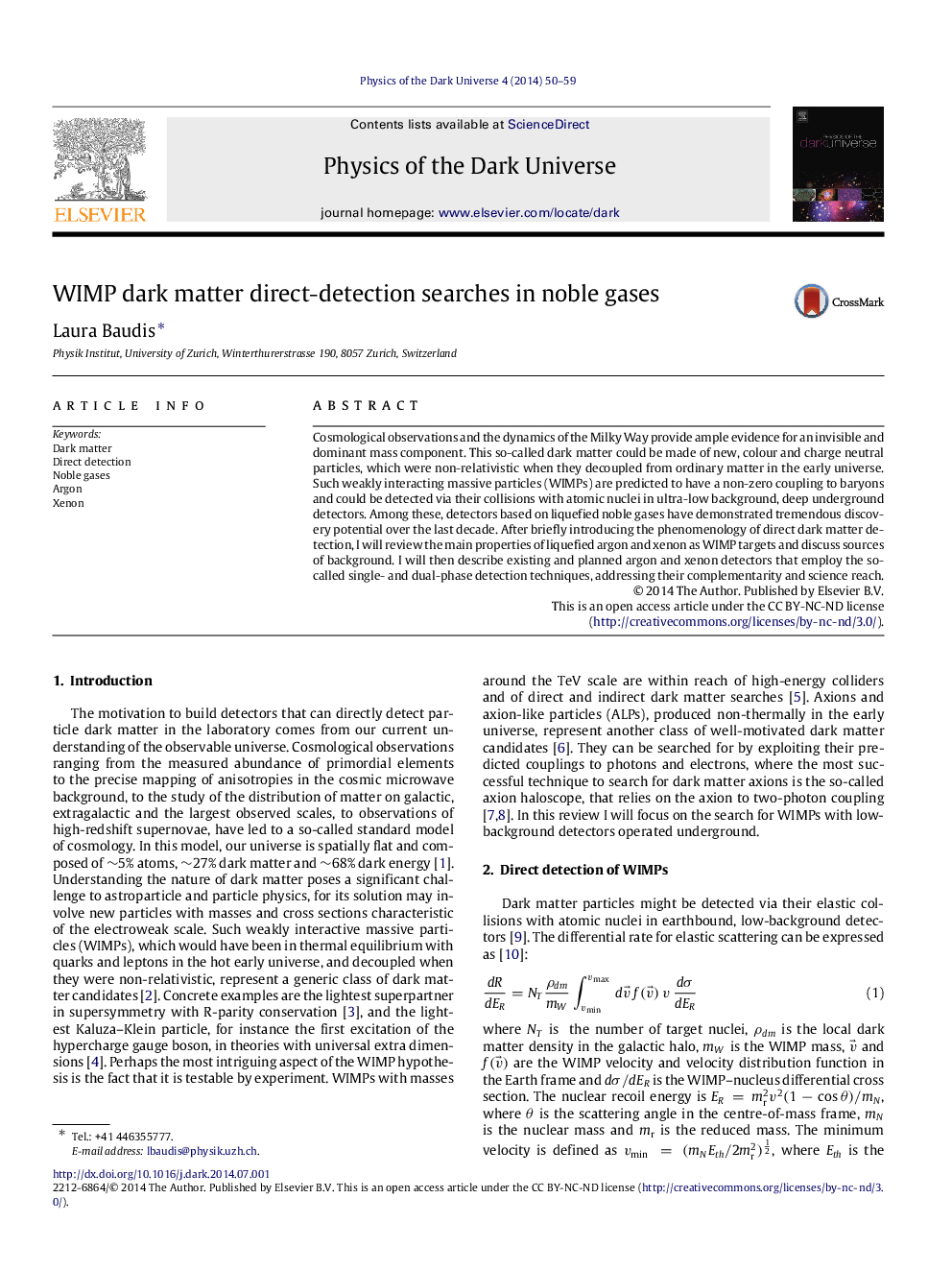| Article ID | Journal | Published Year | Pages | File Type |
|---|---|---|---|---|
| 1780758 | Physics of the Dark Universe | 2014 | 10 Pages |
Cosmological observations and the dynamics of the Milky Way provide ample evidence for an invisible and dominant mass component. This so-called dark matter could be made of new, colour and charge neutral particles, which were non-relativistic when they decoupled from ordinary matter in the early universe. Such weakly interacting massive particles (WIMPs) are predicted to have a non-zero coupling to baryons and could be detected via their collisions with atomic nuclei in ultra-low background, deep underground detectors. Among these, detectors based on liquefied noble gases have demonstrated tremendous discovery potential over the last decade. After briefly introducing the phenomenology of direct dark matter detection, I will review the main properties of liquefied argon and xenon as WIMP targets and discuss sources of background. I will then describe existing and planned argon and xenon detectors that employ the so-called single- and dual-phase detection techniques, addressing their complementarity and science reach.
